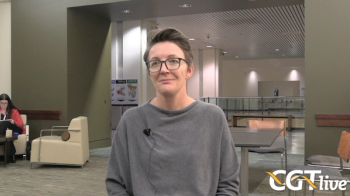
FDA Publishes 3 New Draft Guidance for Industry Documents Aimed at Cell & Gene Therapy Development
The documents cover topics including efficient trial design, expedited review programs, and postapproval data collection.
The FDA has published 3 new “draft guidance for industry” documents intended to provide guidance for the development of cell and gene therapy (CGT) products.1-3
The first of the 3 documents, entitled “Innovative Designs for Clinical Trials of Cellular and Gene Therapy Products in Small Populations,” is intended to provide considerations for trial sponsors who are carrying out trials of such therapies intended to treat small populations of patients, such as those with a particular rare disease. However, the agency points out that in certain circumstances, the guidance provided may be applicable to trials for therapies for common diseases as well, noting that in such cases, the sponsor should hold a discussion with the relevant review division.
The goal of the guidance given in the document is to improve the efficiency of CGT trials. It covers topics including utilizing participants as their own control in single-arm studies, disease progression modeling, externally controlled studies, adaptive clinical trial designs, Bayesian trial designs, master protocol designs, as well as considerations for selection of participants.
“[The] FDA recognizes the significant challenges in developing drug and biological products for rare diseases, including small population sizes where limited data exist to support regulatory decision-making, sparse natural history knowledge, incompletely understood molecular pathogenetic mechanisms, and molecular and phenotypic heterogeneity,” the agency writes in the document.1 “These development challenges are further compounded by unique considerations for product manufacturing and the generation of nonclinical evidence to support a product’s pharmacology and toxicology profile for CGT products. On the other hand, CGT products for rare diseases can be uniquely positioned to allow the tailoring of individual programs, due to the targeted nature of the products, which often directly correct or modify a gene known to cause phenotypic disease. Consideration of innovative clinical trial design features early in product development can help optimize the quality of data generated while maximizing the use of each data point collected throughout the development process.”
The second document, entitled “Expedited Programs for Regenerative Medicine Therapies for Serious Conditions,” focuses on guidance related to the various programs intended to enable more timely review of regenerative medicine advanced therapies (RMATs), a designation that generally covers gene therapies and genetically modified cell therapies, for serious or life-threatening indications.2 The document provides guidance related to fast track designation, breakthrough therapy designation, RMAT designation, priority review designation, and the accelerated approval pathway. It also goes over considerations for trial designs and interactions with Center for Biologics Evaluation and Research staff.
“Due to their distinctive features, regenerative medicine therapies are likely to raise unique safety considerations that would benefit from long-term safety monitoring,” the agency writes in the section on trial design considerations.2 “Many regenerative medicine therapies are intended to be administered once and designed to achieve prolonged biological activity. Since the biological activity of many regenerative medicine therapies may develop or manifest differently when compared with conventional pharmaceuticals (eg, small molecules), monitoring plans for clinical studies should include assessments for both safety and any pharmacologic activity that presents product-specific safety concerns. We recommend that sponsors include in their specific monitoring plans both short-term and long-term safety monitoring, where the duration of long-term safety monitoring should be based on the type of the regenerative medicine therapy product. Sponsors are encouraged to explore the feasibility of leveraging digital health technologies for collecting the safety information necessary for achieving the goals of monitoring and follow-up.”
The third document is entitled “Postapproval Methods to Capture Safety and Efficacy Data for Cell and Gene Therapy Products.”3 It covers approaches for gathering additional data on safety and efficacy after a product has been approved and covers topics including use of real-world data, real-world evidence, electronic health records, medical claims, vital statistics data, and registries as well as decentralized data collection. The FDA notes that the purpose of the guidance in this document does not cover data collection aimed at obtaining expanded approvals.
“The collection of postapproval study data for CGT products is important because during premarketing clinical development, the number of patients receiving CGT products is typically limited,” the agency writes in the document.3 “Additional postapproval efficacy and safety data increase understanding of the long-term safety and effectiveness of CGT products, can help guide safe clinical use of CGT products, and help inform subsequent regulatory decision-making. [The] FDA has previously recommended long-term follow-up observation studies for some CGT products, noting that long-term observations can be an important tool to monitor long-term safety.”
REFERENCES
1. Innovative Designs for Clinical Trials of Cellular and Gene Therapy Products in Small Populations: Draft Guidance for Industry. FDA. September 2025. Accessed September 30, 2025. https://www.fda.gov/media/188892/download
2. Expedited Programs for Regenerative Medicine Therapies for Serious Conditions: Draft Guidance for Industry. FDA. September 2025. Accessed September 30, 2025. https://www.fda.gov/media/188874/download
3. Postapproval Methods to Capture Safety and Efficacy Data for Cell and Gene Therapy Products: Draft Guidance for Industry. FDA. September 2025. Accessed September 30, 2025. https://www.fda.gov/media/188891/download
Newsletter
Stay at the forefront of cutting-edge science with CGT—your direct line to expert insights, breakthrough data, and real-time coverage of the latest advancements in cell and gene therapy.










































